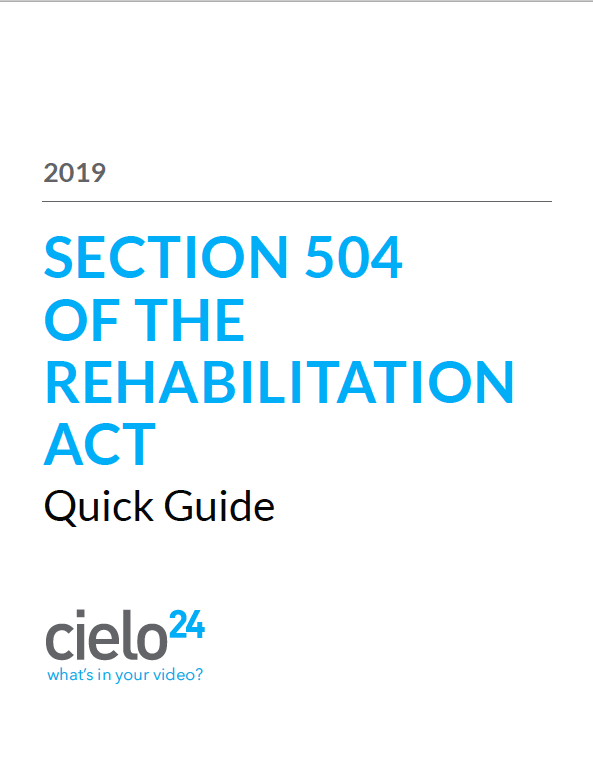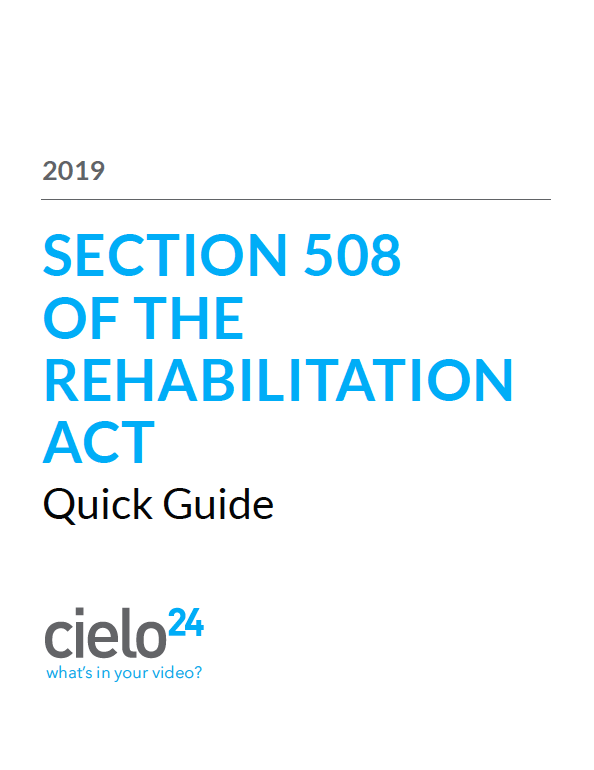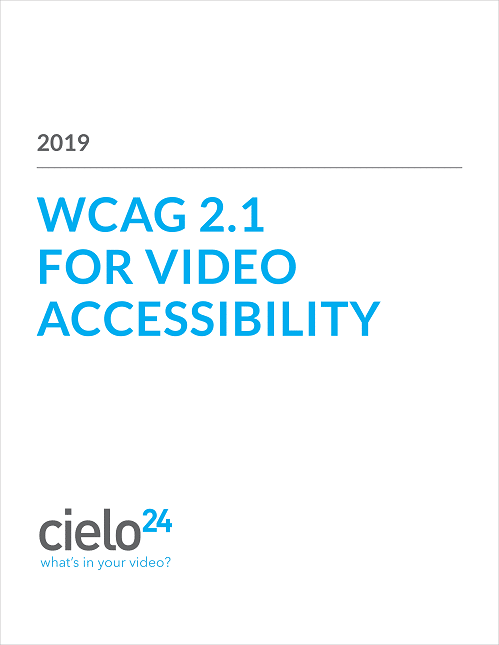
About Title III of the ADA – What are Places of Public Accommodation?
Understanding Title III of the ADA
Understanding Title III of the ADA (Americans with Disabilities Act) isn’t always easy. Title III of the ADA covers Places of Public Accommodation, which includes a variety of different businesses and organizations. But there are some intricacies related to online-only Places of Public Accommodation that you should be aware of.
We will take a look at who exactly is subject to Title III of the ADA and how you can meet the requirements and avoid legal action.
What are Places of Public Accommodation?
According to the ADA, the following entities are covered by Title III:
 Places of Public accommodation (i.e., private entities that own, operate, lease, or lease to places of public accommodation)
Places of Public accommodation (i.e., private entities that own, operate, lease, or lease to places of public accommodation)
- This includes over five million private establishments, such as restaurants, hotels, theaters, convention centers, retail stores, shopping centers, dry cleaners, laundromats, pharmacies, doctors’ offices, hospitals, museums, libraries, parks, zoos, amusement parks, private schools, day care centers, health spas, and bowling alleys.
- Commercial Facilities
- Nonresidential facilities, including office buildings, factories, and warehouses, whose operations affect commerce.
- Private entities that offer certain examinations and courses related to educational and occupational certification. (This includes many private universities)
- Private clubs are not covered, except to the extent that the facilities of the private club are made available to customers or patrons of a place of public accommodation.
- Entities controlled by religious organizations, including places of worship, are not covered.
- State and local governments are not covered by the title III regulation, but rather by the Department of Justice’s title II regulation.
What Do Places of Public Accommodation Look Like Today?

In today’s market, this can be a difficult question to answer because of the technological changes that have happened since the 1990s when the ADA was first drafted. Back in 1992, all that was contemplated was brick and mortar facilities. There wasn’t an online or virtual or digital presence. Now that technology has changed this landscape, courts have been struggling to figure out what counts under Title III.
In the First Circuit, they say that website-only businesses are covered by Title III. In the Ninth Circuit, the law is that Title III only applies to online businesses that have an integrated physical presence. For example, if you want to shop at Target you can go online, get coupons and place an order to pick up at a brick and mortar facility.
Are Online-Only Businesses Subject to ADA Requirements?

While Title III of the ADA is not explicit regarding the inclusion of online-only businesses, the Department of Justice is — and they assert that online-only businesses are subject to the ADA. This is important to know, as the DOJ is the entity that is ultimately in charge of legislation, regulations, and the enforcement of the ADA. So, it is best to start now and phase in access even if you have a virtual presence only.
What Are the Consequences of Not Being Ready?
Organizations need to anticipate that they will be obligated to meet the Title III ADA standard in the next year. The last thing you want to have is somebody knocking on your doorstep with either a class action lawsuit or an enforcement proceeding. You would have to spend millions of dollars that you didn’t previously budget for and answer to either shareholders or stakeholders as to why you didn’t see this one coming.
If you aren’t accessibility-ready, you can face millions upon millions of dollars in potential sanctions, fines, and lawsuits, as well as the costs to remedy the issue. For example, if you are a big financial institution that has 50,000 ATMs that need to be changed out for accessible ones and each ATM is $75,000, the cost adds up very quickly.
Additionally, it is important to remember that accessibility is first and foremost the right thing to do and the best way to serve your customers, on top of being a legal requirement.
How Do I Meet the Requirements?

The ADA prohibits discrimination and ensures equal opportunity for people with disabilities. This means ensuring effective communication equal to that of customers who do not have a disability. The ADA has a set of technical guidelines called the ADAAG, which can be accessed here.
The baseline standard that all organizations should have to ensure effective communication is conformance with WCAG 2.0 Level AA. WCAG 2.0 was developed by the World Wide Web Consortium (W3C) to establish a set of international standards that ensure equal access to the web. These requirements cover many areas of accessibility, from video to contrast to compatibility with assistive devices. For example, captions are required on all multimedia to ensure accessibility for people with hearing disabilities.
It is also important to note that if you are subject to Title III of the ADA, you may also be subject to other U.S. laws, such as Section 504 and 508 of the Rehabilitation Act, or state-level laws regarding accessibility. You can find out what laws and policies apply to your organizations by downloading 2019 Federal and State Accessibility Laws & Guidelines eBook.
What Resources Are There?
Luckily there are tons of resources out there to help organizations meet accessibility requirements. For one, there is the W3C, WAI, and WCAG 2.0 websites. There is also the United States Access Board and ADA.gov provides detailed information. For web accessibility, there are tools such as the WAVE tool that will test your site, as well as advocacy groups that will test the accessibility of your site. Additionally, cielo24 has a variety of eBook resources that walk you through various aspects of ADA compliance:
Media Solutions for Title III of the ADA
 Our Enterprise-level accounts help companies comply with media Title III of the ADA standards and are built around your specific video needs. They come with the help of an account executive, as well as opening you up to our full suite of features like 16+ foreign language translations, advanced media data, and our video wrapper.
Our Enterprise-level accounts help companies comply with media Title III of the ADA standards and are built around your specific video needs. They come with the help of an account executive, as well as opening you up to our full suite of features like 16+ foreign language translations, advanced media data, and our video wrapper.
Our Self Serve web app allows you to get started ordering video transcripts and captions immediately, without the wait for contracts or quotes. For more information on our video transcription, captioning and video intelligence solutions, contact us online or call us at 1-855-243-5624.
cielo24 is removing barriers to increase video marketing ROI, searchability and compliance for all your videos!
Take a Video Captioning test-drive >>
Transcripts Support Globalization for International Media Reach
It’s become very commonplace for a business to cross onto other shores, and communicate with new cultures. Borders are “virtually” dissolving thanks to the internet, and our vast oceans and…>>

